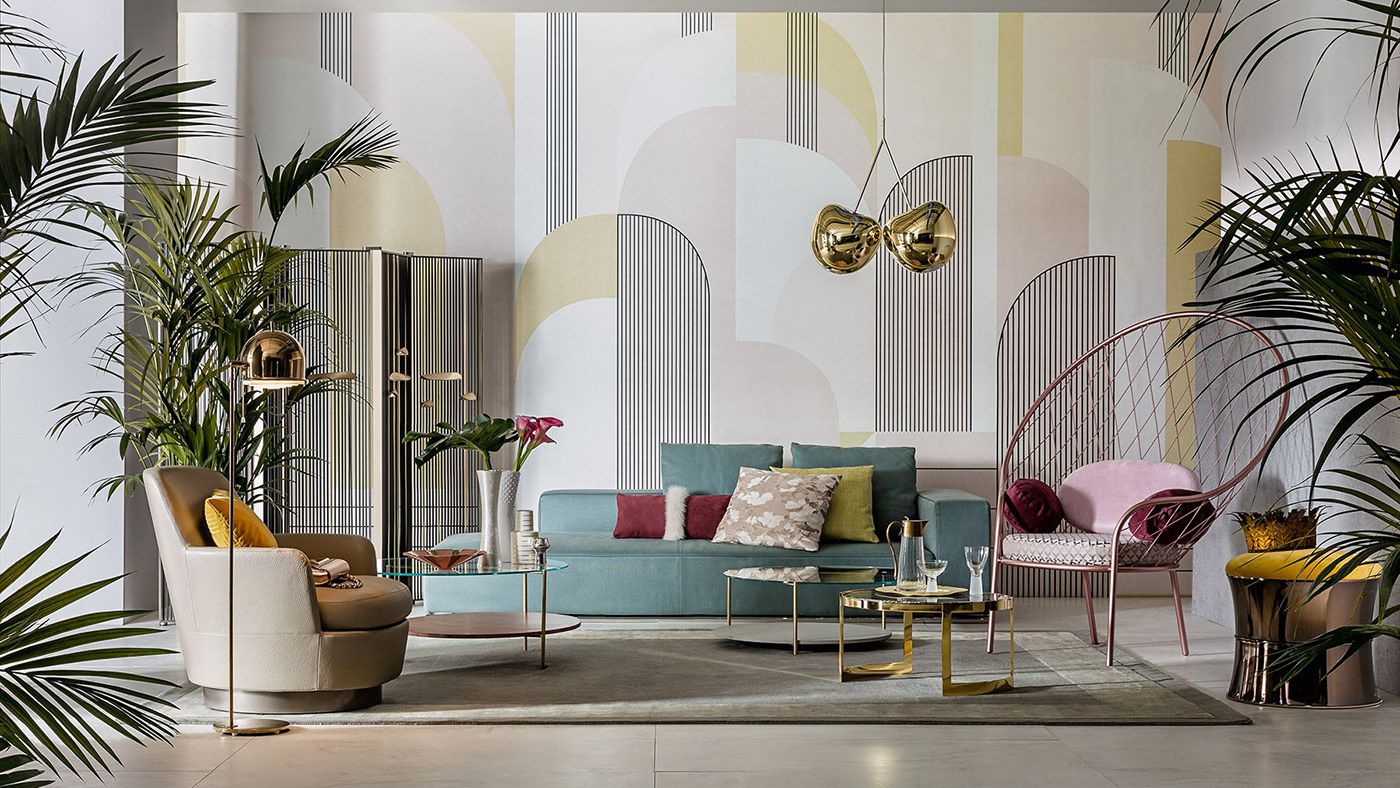 Furniture and Decor: Start by evaluating your current furniture and decor choices. Consider the overall style and coherence of your home’s aesthetic. Remove any items that no longer fit or contribute to the desired style, and replace them with pieces that align with your vision. Incorporate a mix of textures, colors, and patterns to add depth and visual interest to each room.
Furniture and Decor: Start by evaluating your current furniture and decor choices. Consider the overall style and coherence of your home’s aesthetic. Remove any items that no longer fit or contribute to the desired style, and replace them with pieces that align with your vision. Incorporate a mix of textures, colors, and patterns to add depth and visual interest to each room.
Creating a visually appealing and harmonious living space starts with evaluating your furniture and decor choices. Take a step back and consider the overall style and coherence of your home’s aesthetic. Does it reflect your personality and taste? Is it cohesive and pleasing to the eye? If not, it might be time for a change.
One of the first steps in revamping your home’s interior is to remove any items that no longer fit or contribute to the desired style. This could mean getting rid of outdated furniture, cluttered decorations, or mismatched pieces. By clearing out these elements, you’ll create a blank canvas and make room for new additions that will truly enhance your space.
Once you’ve decluttered, it’s time to replace those items with pieces that align with your vision. Whether you prefer a modern, minimalist look or a cozy, rustic feel, choose furniture and decor that speaks to your desired style. Look for pieces that not only complement each other but also complement the overall theme of your home.
To add depth and visual interest to each room, incorporate a mix of textures, colors, and patterns. Experiment with different materials such as wood, metal, or glass to create a diverse and visually appealing environment. Introduce pops of color through accent pieces like throw pillows, rugs, or artwork. Consider incorporating patterns through wallpapers, curtains, or upholstery to add a touch of personality to your space.
Remember, balance is key. Avoid overcrowding a room with too many textures, colors, or patterns, as it can create a chaotic and overwhelming atmosphere. Instead, aim for a well-curated mix that creates a harmonious and inviting ambiance.
Lastly, don’t forget about the importance of lighting. It can make or break the atmosphere of a room. Consider incorporating a combination of natural and artificial lighting to create different moods throughout the day. Opt for task lighting in areas where you need focused illumination, such as a desk or kitchen counter, and ambient lighting to create a warm and inviting atmosphere in living spaces.
In conclusion, transforming your home’s interior starts with evaluating your furniture and decor choices. Remove any items that no longer fit or contribute to the desired style, and replace them with pieces that align with your vision. Incorporate a mix of textures, colors, and patterns to add depth and visual interest to each room. Remember to find a balance between different elements and pay attention to lighting to create a harmonious and inviting living space that reflects your personal style.
Color Palette: Choose a cohesive color palette that reflects your personal style and creates a harmonious atmosphere throughout your home. Consider the mood you want to evoke in each room and select colors accordingly. Use a combination of neutral tones as a base and add pops of color through accessories, artwork, or accent walls. Strive for balance and ensure that the colors flow seamlessly from one room to another.
Creating a harmonious and visually appealing home starts with choosing the right color palette. The colors you select will not only reflect your personal style but also set the mood for each room. To achieve a cohesive look, it’s important to consider the overall atmosphere you want to create. Are you going for a calm and serene environment, or do you prefer vibrant and energetic spaces?
Begin by selecting a base of neutral tones. These timeless colors such as whites, grays, and muted beige serve as a foundation and allow for versatility in style and design. Neutrals also create a sense of balance and can easily be paired with other colors. Once you have established your neutral base, it’s time to add pops of color to infuse personality into your space.
One way to incorporate color is through accessories such as throw pillows, rugs, curtains, and artwork. These elements can be easily swapped and changed, allowing you to experiment with different hues and tones. Consider using colors that evoke the desired mood for each room. For instance, cool blues and greens can create a calming effect in bedrooms and bathrooms, while warm yellows and oranges can add a sense of energy to living areas.
Another option to introduce color is through accent walls. Choose a focal point in each room, such as a fireplace or a large piece of furniture, and paint the wall behind it in a bold and contrasting color. This technique adds depth and visual interest to the space. However, be mindful not to overwhelm the room with too many accent walls. Strive for balance by limiting bold colors to only one or two walls per room.
As you select colors for each room, ensure that they flow seamlessly from one space to another. Consider the layout of your home and how rooms connect to each other. The transition should feel natural and cohesive. One way to achieve this is by using a color wheel. Look for colors that are adjacent or complementary to each other on the wheel. This will create a harmonious and visually pleasing flow throughout your home.
In conclusion, choosing a color palette for your home is a crucial step in creating a harmonious and visually appealing space. Start with a base of neutral tones and add pops of color through accessories, artwork, or accent walls. Consider the mood you want to evoke in each room and select colors accordingly. Strive for balance and ensure that the colors flow seamlessly from one room to another. With a well-thought-out color scheme, you can transform your home into a haven that reflects your personal style and creates a harmonious atmosphere.
Lighting plays a crucial role in enhancing the style and ambiance of your home. Assess the current lighting fixtures and update them as needed. Incorporate a mix of ambient, task, and accent lighting to create different layers of illumination. Install dimmer switches to adjust the intensity of the lighting and create various moods. Consider incorporating natural light through windows or skylights to create a brighter and more inviting space.
The lighting in your home is not just about functionality; it also contributes significantly to the overall aesthetics and atmosphere of each room. By carefully considering the lighting options available to you, you can transform your space into a warm, inviting retreat that is both practical and visually appealing.
Firstly, take a moment to assess the current lighting fixtures in your home. Are they outdated or in need of repair? If so, it may be time to update them. Look for fixtures that match the style and decor of each room while also providing adequate illumination. From elegant chandeliers to sleek pendant lights, there are countless options to choose from that can instantly elevate the look of your space.
To create a well-balanced lighting scheme, incorporate a mix of ambient, task, and accent lighting. Ambient lighting, also known as general lighting, illuminates the entire room and sets the overall mood. This can be achieved through ceiling-mounted fixtures, such as recessed lights or flush-mounts, or even wall sconces. Task lighting, on the other hand, focuses on specific areas where activities take place, such as reading or cooking. Desk lamps, under-cabinet lights, or adjustable track lighting are all great options for task lighting. Lastly, accent lighting draws attention to particular features or objects in the room, such as artwork or architectural details. Use spotlights, picture lights, or even well-placed candles to create a visually captivating effect.
Don’t forget about the importance of dimmer switches. These simple additions allow you to control the intensity of the lighting, creating different moods throughout the day or evening. Dimmers are especially helpful in areas where you want to create a relaxing ambiance, such as the bedroom or living room. By adjusting the lighting to a lower setting, you can instantly transform the space into a cozy haven.
Incorporating natural light is another key aspect of lighting design. Consider adding or expanding windows to allow more daylight to flood your home. If windows are not an option, skylights can be a fantastic alternative, effortlessly bringing the beauty of the outdoors inside. Natural light not only brightens up your space but also provides a sense of openness and connection to the outside world.
In conclusion, when it comes to lighting, think beyond just functionality. Assess your current fixtures and update them as needed, incorporating a mix of ambient, task, and accent lighting for a well-balanced illumination scheme. Don’t forget to install dimmer switches to adjust the lighting intensity and create various moods. Lastly, consider bringing in natural light through windows or skylights to create a brighter and more inviting space. With these considerations in mind, you can create a home that not only looks stunning but also feels warm and welcoming.
Declutter and Organize: A clutter-free home instantly improves its style and appeal. Take the time to declutter each room, getting rid of items that are no longer useful or necessary. Find suitable storage solutions for belongings that you want to keep but don’t need on display. Ensure that everything has a designated place to maintain a clean and organized look. Consider utilizing stylish storage containers and furniture with built-in storage to keep your space tidy and visually pleasing.
Having a clutter-free home is not only aesthetically pleasing but also contributes to a peaceful and organized environment. Clutter can quickly accumulate, leaving your living space feeling chaotic and overwhelming. To combat this, take the time to declutter each room in your home. Start by going through your belongings and getting rid of items that are no longer useful or necessary. This process will not only free up valuable space but also make it easier to clean and maintain your home.
Once you have decluttered, it’s important to find suitable storage solutions for the belongings you want to keep but don’t necessarily need on display. Invest in storage containers that are not only practical but also stylish. Look for containers that match your home’s decor and enhance its overall style. This way, even when items are tucked away, your home will still exude a sense of style and sophistication.
In addition to storage containers, consider furniture with built-in storage options. Ottomans or coffee tables with hidden compartments provide a convenient and attractive way to store items like blankets, magazines, or remote controls. This type of furniture not only adds functionality to your space but also reduces clutter by keeping essential items out of sight.
To maintain a clean and organized look, ensure that everything in your home has a designated place. This means finding suitable storage solutions for everything—from kitchen utensils and bathroom essentials to clothing and accessories. Having a designated place for each item will not only make it easier to find things when you need them but also prevent unnecessary clutter from building up.
Remember, maintaining an organized home is an ongoing process. Regularly review your belongings and assess whether there are items you no longer need or use. By periodically decluttering, you can prevent future accumulation of unnecessary items, ensuring that your home remains tidy and organized.
In conclusion, decluttering and organizing your home is the key to improving its style and appeal. Take the time to declutter each room, getting rid of items that are no longer useful or necessary. Find suitable storage solutions, such as stylish storage containers and furniture with built-in storage, to keep your space tidy and visually pleasing. Establish a designated place for each item in your home to maintain a clean and organized look. With these simple steps, you can transform your home into a haven of style and tranquility.


